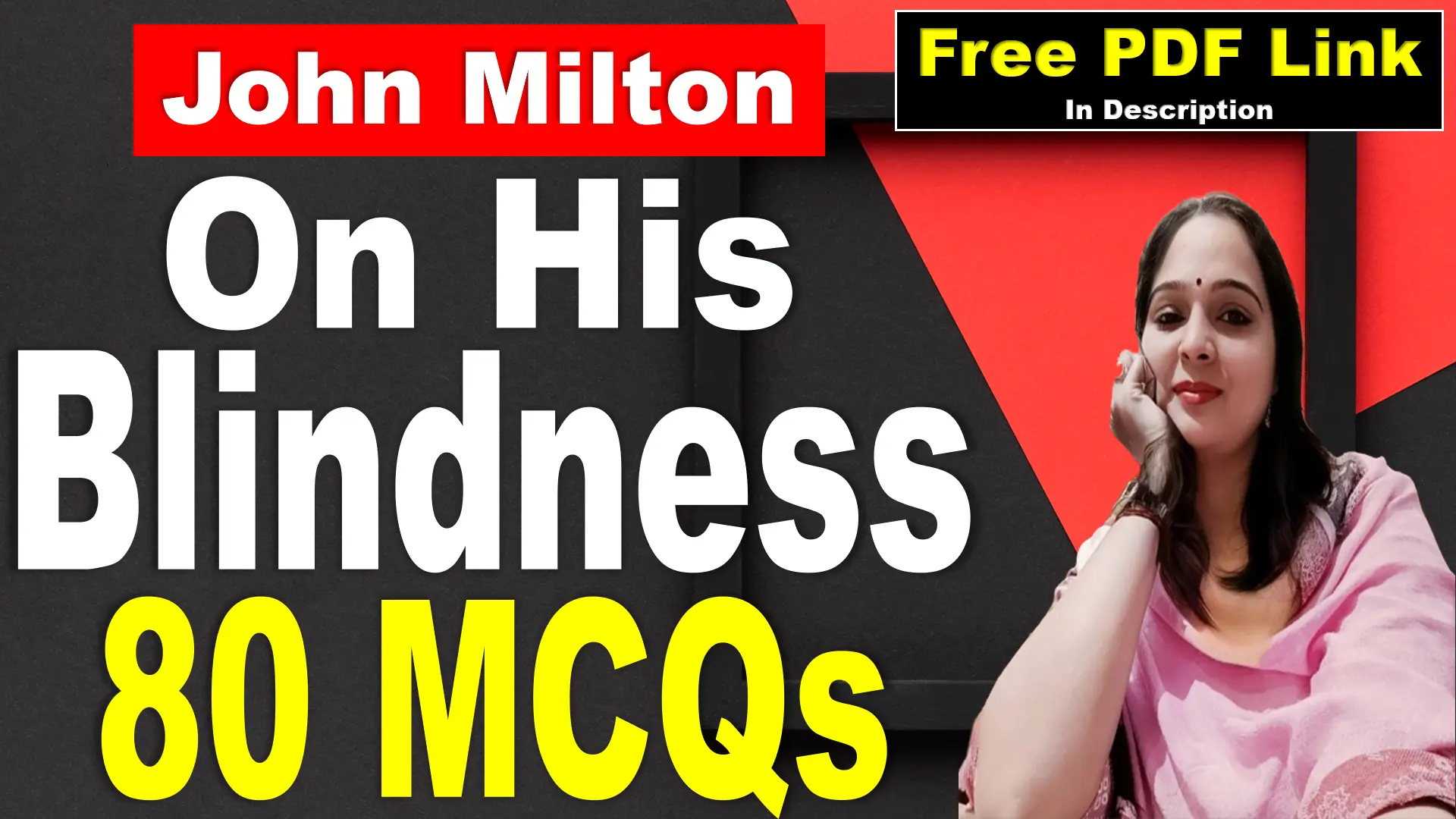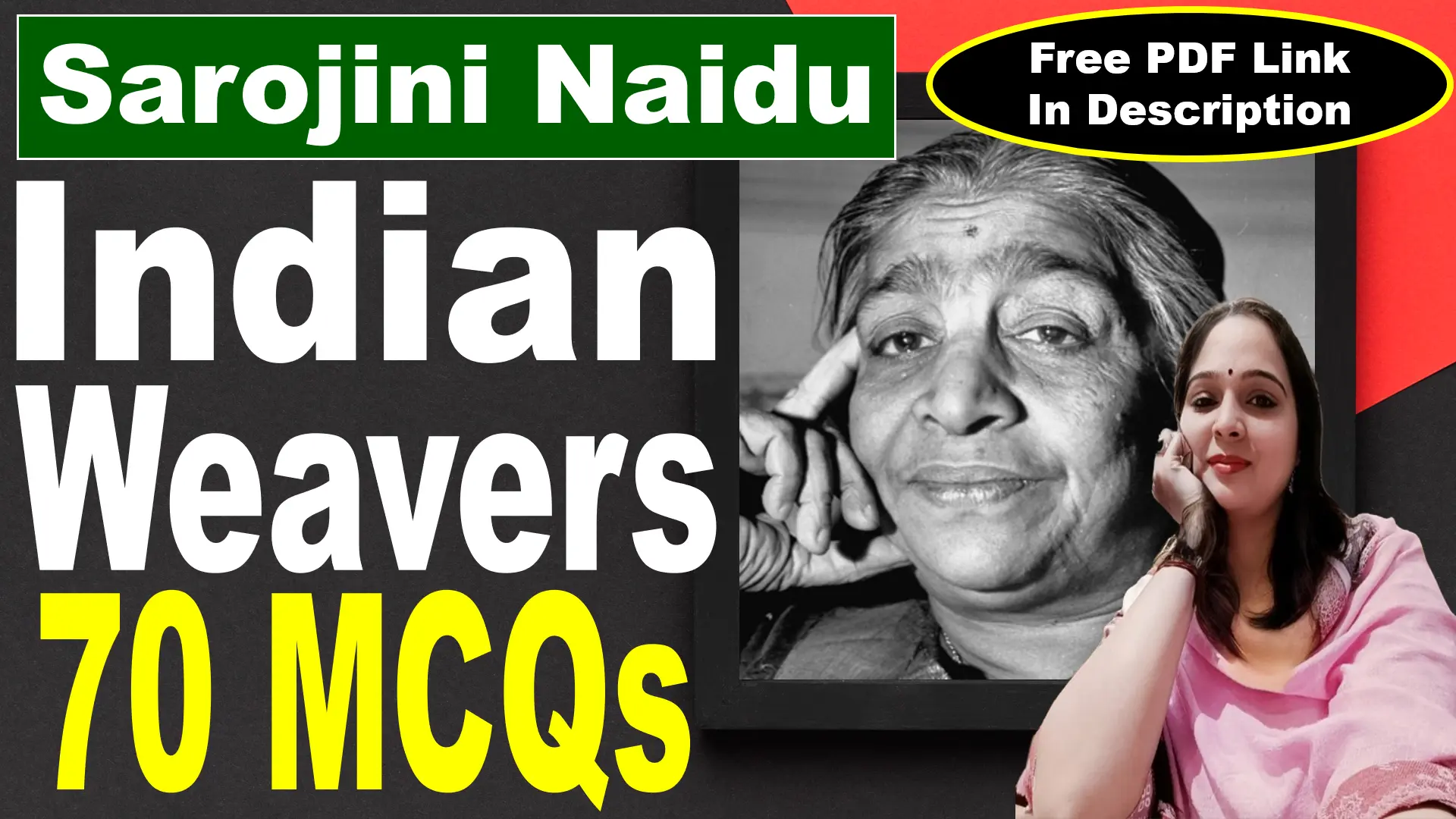
201. How did Arun Kolatkar contribute to Indian poetry in English?
a) By creating a unique bilingual poetic voice
b) By translating Sanskrit texts
c) By rejecting modernist trends
d) By focusing solely on English
Answer: a) By creating a unique bilingual poetic voice
Explanation: Arun Kolatkar contributed to Indian poetry in English by crafting a unique bilingual poetic voice, seamlessly blending his Marathi and English works. His English collection Jejuri (1976) showcases a modernist, imagistic style, while his Marathi poetry, like Bhijki Vahi, draws on regional idioms and rhythms. This bilingualism enriched Indian English poetry with a hybrid sensibility, rooted in Bombay’s multicultural ethos. Unlike peers who focused solely on English or rejected modernism, Kolatkar’s dual practice bridged linguistic traditions, offering a fresh, authentic voice that resonated globally and locally, influencing poets to embrace India’s diverse literary heritage.
202. In which region is Jayanta Mahapatra’s poetry often set?
a) Punjab
b) Maharashtra
c) Orissa
d) Bengal
Answer: c) Orissa
Explanation: Jayanta Mahapatra’s poetry is often set in Orissa (now Odisha), his native region, which deeply shapes his imagery and themes. Born in Cuttack in 1928, Mahapatra uses Orissa’s landscapes—its temples, rivers, and coastal villages—as a backdrop to explore human emotions and existential questions. Works like Relationship evoke the state’s cultural and natural texture, from Puri’s rituals to rural silence. This regional grounding distinguishes him from urban-focused poets, offering a lyrical yet grounded portrayal of eastern India. Orissa’s presence in his poetry reflects his intimate connection to its history, myths, and everyday life
203. What is a key theme in Jayanta Mahapatra’s poetry?
a) Nature and human experience
b) Urban alienation
c) Political satire
d) Colonial nostalgia
Answer: a) Nature and human experience
Explanation: A key theme in Jayanta Mahapatra’s poetry is nature and human experience, intricately woven to reflect life’s complexities. In collections like A Rain of Rites, he juxtaposes Orissa’s natural elements—rain, rivers, and dawn—with human struggles, love, and mortality. His work avoids political satire or colonial nostalgia, instead delving into universal emotions through a local lens. Mahapatra’s nature isn’t mere backdrop but a living force, mirroring inner landscapes of grief, silence, and resilience. This focus, rendered in a modernist style, distinguishes his poetry as a meditative exploration of existence rooted in the physical world.
204. Which of Jayanta Mahapatra’s works won the Sahitya Akademi Award?
a) Dispossessed Nests
b) A Rain of Rites
c) Land
d) Relationship
Answer: d) Relationship
Explanation: Relationship (1980) is the poetry collection by Jayanta Mahapatra that won the Sahitya Akademi Award in 1981, making him the first Indian English poet to receive this honor. This long poem reflects his deep ties to Orissa, weaving personal memory with the region’s history, myths, and landscapes, particularly the Konark Sun Temple. Its introspective tone and rich imagery explore identity, loss, and human connection, showcasing Mahapatra’s lyrical mastery.
205. Which literary movement influenced Mahapatra?
a) Romanticism
b) Modernism
c) Realism
d) Symbolism
Answer: b) Modernism
Explanation: Jayanta Mahapatra was profoundly influenced by Modernism, a literary movement emphasizing experimentation, subjectivity, and fragmented forms. Beginning to write poetry in his 40s, he drew from modernist poets like T.S. Eliot and Ezra Pound, adopting a sparse, imagistic style over romantic flourish. In works like A Rain of Rites, he blends Orissa’s sensory details with introspective depth, reflecting modernist concerns with inner experience over narrative.
206. Which anthology includes Mahapatra’s poetry?
a) The Oxford India Anthology
b) 60 Indian Poets
c) New Writing in India
d) All of the above
Answer: d) All of the above
Explanation: Jayanta Mahapatra’s poetry appears in multiple significant anthologies, including The Oxford India Anthology of Twelve Modern Indian Poets (1992), edited by Arvind Krishna Mehrotra, 60 Indian Poets (2008), edited by Jeet Thayil, and New Writing in India (1974), edited by Adil Jussawalla. These collections showcase his evocative, Orissa-rooted modernist verse, affirming his stature in Indian English poetry. His inclusion across these anthologies reflects his broad recognition—The Oxford India Anthology highlights his innovation, 60 Indian Poets his enduring legacy, and New Writing in India his early impact. “All of the above” underscores his pervasive influence.
207. Which poet was a key figure in Bombay’s modernist poetry scene?
a) Nissim Ezekiel
b) Jayanta Mahapatra
c) A.K. Ramanujan
d) Meena Alexander
Answer: a) Nissim Ezekiel
Explanation: Nissim Ezekiel was a key figure in Bombay’s modernist poetry scene, shaping Indian English poetry in the post-independence era. Based in Bombay (now Mumbai), he pioneered a modernist style with works like Night of the Scorpion, blending urban irony with Indian sensibilities. Unlike Mahapatra’s Orissa focus or Ramanujan’s diaspora lens, Ezekiel’s Bombay-centric voice—seen in his teaching, editing of Quest, and mentoring—nurtured poets like Kolatkar and Jussawalla. His leadership in the city’s literary circles, including the PEN All-India Centre, made him a central figure in fostering a vibrant, modernist poetic community in Bombay during the 1950s and 1960s.
208. Which work by Dom Moraes reflects his later style?
a) Typed with One Finger
b) Poems
c) A Beginning
d) John Nobody
Answer: a) Typed with One Finger
Explanation: Typed with One Finger (2001) reflects Dom Moraes’s later style, marked by an autobiographical, introspective tone distinct from his youthful lyricism in A Beginning. Written late in life, this collection reveals a shift to personal reflection—aging, loss, and his career as a poet and journalist. The title hints at physical decline, adding poignancy to its confessional quality.
209. Who explored gender themes in a confessional style?
a) Adil Jussawalla
b) Arun Kolatkar
c) Kamala Das
d) Arvind Krishna Mehrotra
Answer: c) Kamala Das
Explanation: Kamala Das explored gender themes in a confessional style, making her a standout voice in Indian English poetry. In works like Summer in Calcutta and The Old Playhouse, she boldly addressed female sexuality, marital discontent, and personal freedom with raw, unfiltered emotion. Unlike Jussawalla’s postcolonial focus, Kolatkar’s skepticism, or Mehrotra’s linguistic play, Das’s poetry—often compared to Sylvia Plath’s—challenged patriarchal norms head-on.
210. Which poet translated Kabir’s poetry into English?
a) Eunice de Souza
b) Jayanta Mahapatra
c) Arun Kolatkar
d) Arvind Krishna Mehrotra
Answer: d) Arvind Krishna Mehrotra
Explanation: Arvind Krishna Mehrotra translated the poetry of Kabir, the 15th-century mystic, into English, notably in Songs of Kabir (2011). A poet and scholar, Mehrotra rendered Kabir’s devotional yet rebellious verses—originally in Hindi—into a spare, modern idiom, preserving their wit and spiritual depth. Unlike de Souza’s feminist focus, Mahapatra’s nature themes, or Kolatkar’s bilingualism, Mehrotra’s translations bridge India’s vernacular traditions with English, reflecting his broader project of linguistic hybridity.
211. Which anthology was edited by Jeet Thayil?
a) Modern Indian Poetry in English
b) 60 Indian Poets
c) The Oxford India Anthology
d) New Writing in India
Answer: b) 60 Indian Poets
Explanation: Jeet Thayil edited 60 Indian Poets, published in 2008 by Penguin India, an anthology celebrating six decades of Indian English poetry post-independence. Featuring poets like Nissim Ezekiel, Kamala Das, and Jayanta Mahapatra, it spans generations and styles, showcasing the genre’s evolution. Thayil, a poet and novelist himself, curated this collection to highlight diversity—from modernist pioneers to contemporary voices—while including his own work.
212. Which female poet edited Nine Indian Women Poets?
a) Eunice de Souza
b) Kamala Das
c) Melanie Silgardo
d) Meena Alexander
Answer: a) Eunice de Souza
Explanation: Eunice de Souza edited Nine Indian Women Poets, published in 1997, a landmark anthology amplifying female voices in Indian English poetry. A poet and critic from Bombay, de Souza selected poets like Kamala Das, Melanie Silgardo, and herself, focusing on their unique perspectives on gender, identity, and society. Her editorial vision foregrounded women’s contributions in a male-dominated field, blending wit and incisiveness—hallmarks of her own work.
213. Which poet’s Land’s End was published in the 1960s?
a) Nissim Ezekiel
b) Arun Kolatkar
c) Adil Jussawalla
d) Dom Moraes
Answer: c) Adil Jussawalla
Explanation: Adil Jussawalla’s Land’s End was published in 1962, marking his debut as a significant Indian English poet. Written during his time in England, this collection reflects a young poet’s encounter with alienation and identity, infused with modernist influences like T.S. Eliot. Unlike Ezekiel’s urban irony or Moraes’s lyrical precocity, Land’s End explores a liminal space—geographical and emotional—capturing Jussawalla’s early ambivalence toward language and belonging. Published by Writers Workshop, it introduced his introspective style, setting the stage for later works like Missing Person and his role in Bombay’s literary scene.
214. Which poet’s Kala Ghoda Poems reflects Bombay’s urban space?
a) Adil Jussawalla
b) Nissim Ezekiel
c) Dom Moraes
d) Arun Kolatkar
Answer: d) Arun Kolatkar
Explanation: Arun Kolatkar’s Kala Ghoda Poems (2004) vividly reflects Bombay’s urban space, focusing on the Kala Ghoda district, a cultural hub in South Mumbai. This posthumous English collection captures the city’s street life—vendors, stray dogs, and monsoon rhythms—with Kolatkar’s signature imagistic precision and wry humor.
215. Which poet’s work is analyzed for its “double edge”?
a) Adil Jussawalla
b) Nissim Ezekiel
c) Dom Moraes
d) Eunice de Souza
Answer: a) Adil Jussawalla
Explanation: Adil Jussawalla’s work is analyzed for its “double edge,” a term reflecting his ambivalence toward English and postcolonial identity. In collections like Missing Person (1976), he navigates the dual role of English as both a creative tool and a colonial burden, cutting into his sense of self.
216. Which poet was a pioneer of Bombay’s modernist poetry?
a) Jayanta Mahapatra
b) Nissim Ezekiel
c) A.K. Ramanujan
d) Kamala Das
Answer: b) Nissim Ezekiel
Explanation: Nissim Ezekiel was a pioneer of Bombay’s modernist poetry, shaping Indian English poetry in the post-independence era. Based in Bombay (now Mumbai), he introduced a modernist style—marked by irony, clarity, and urban themes—in works like The Exact Name and Night of the Scorpion. Unlike Mahapatra’s Orissa focus, Ramanujan’s diaspora lens, or Das’s confessionalism, Ezekiel’s Bombay-centric voice captured the city’s multicultural pulse. As a professor, editor of Quest, and mentor to poets like Kolatkar, he fostered a vibrant literary scene in the 1950s and 1960s, making Bombay a hub for modernist innovation in Indian poetry.
217. Which work by Dom Moraes explores travel?
a) John Nobody
b) A Beginning
c) Out of God’s Oven
d) The Cinnamon Shade
Answer: c) Out of God’s Oven
Explanation: Out of God’s Oven: Travels in a Fractured Land (2002), co-authored by Dom Moraes with Sarayu Srivatsa, explores his travels across India. Unlike his poetry collections like John Nobody or A Beginning, this prose work blends journalism and memoir, documenting encounters with India’s diverse landscapes and people—from slums to villages. Moraes, a seasoned traveler and poet, captures the subcontinent’s social fractures with a lyrical yet unflinching gaze. Published late in his career, it reflects his lifelong curiosity about the world, distinguishing it from his earlier, more introspective poetic output.
218. Who wrote The Old Playhouse and Other Poems?
a) Eunice de Souza
b) Meena Alexander
c) Melanie Silgardo
d) Kamala Das
Answer: d) Kamala Das
Explanation: Kamala Das wrote The Old Playhouse and Other Poems (1973), a powerful collection in her confessional oeuvre. Known for her bold exploration of gender and personal freedom, Das uses this work to critique patriarchal constraints, particularly within marriage. The titular poem portrays a woman trapped in a stifling domestic role, blending raw emotion with vivid imagery.
219. Which bilingual poet wrote Sarpa Satra?
a) Dom Moraes
b) Nissim Ezekiel
c) Arun Kolatkar
d) Adil Jussawalla
Answer: c) Arun Kolatkar
Explanation: Arun Kolatkar, a celebrated bilingual poet, wrote Sarpa Satra (2004), an English work published posthumously. Known for his Marathi and English poetry, Kolatkar reimagines a Mahabharata episode—the snake sacrifice—with his characteristic modernist flair and irony.
220. Which female poet critiqued societal norms?
a) Eunice de Souza
b) Kamala Das
c) Both A and B
d) Melanie Silgardo
Answer: c) Both A and B
Explanation: Both Eunice de Souza and Kamala Das critiqued societal norms through their poetry, making “Both A and B” the apt choice. De Souza, in works like Women in Dutch Painting, uses sharp wit to challenge gender roles and Catholic hypocrisy in Bombay. Das, with collections like Summer in Calcutta, boldly confronts patriarchal oppression and female sexuality with a confessional tone. While Silgardo explores personal themes, de Souza and Das stand out for their direct societal critique—de Souza with irony, Das with raw honesty—shaping Indian feminist poetry by dismantling norms and amplifying women’s voices in distinct yet complementary ways.
221. Which poet’s Missing Person explores identity?
a) Nissim Ezekiel
b) Arun Kolatkar
c) Adil Jussawalla
d) Dom Moraes
Answer: c) Adil Jussawalla
Explanation: Adil Jussawalla’s Missing Person (1976) is a profound exploration of identity, delving into the fragmented self of a postcolonial Indian poet. Published after his return to Bombay from England, the collection uses the titular figure to reflect Jussawalla’s ambivalence toward English and his cultural dislocation.
222. Which poet’s Bhijki Vahi is in Marathi?
a) Dom Moraes
b) Arun Kolatkar
c) Adil Jussawalla
d) Nissim Ezekiel
Answer: b) Arun Kolatkar
Explanation: Arun Kolatkar’s Bhijki Vahi (2003) is a celebrated Marathi poetry collection, showcasing his bilingual mastery alongside his English works like Jejuri. Published posthumously, it won the Sahitya Akademi Award, highlighting Kolatkar’s deep ties to Marathi literature. The title, meaning “Soaked Notebook,” evokes a raw, experimental style, blending Bombay’s street life with mythic undertones.
223. Which poet contributed to Quest?
a) Nissim Ezekiel
b) Arun Kolatkar
c) Adil Jussawalla
d) Dom Moraes
Answer: a) Nissim Ezekiel
Explanation: Nissim Ezekiel was a key contributor to Quest, a Bombay-based literary magazine he edited in the 1950s and 1960s. Launched in 1955, Quest provided a platform for Indian English writing, featuring poetry, essays, and criticism from emerging voices. Ezekiel’s editorial role amplified his influence as a modernist pioneer, publishing his own works—like The Professor—and nurturing poets like Kolatkar and Jussawalla.
224. Which poet’s work is considered a minor literature?
a) Adil Jussawalla
b) Arun Kolatkar
c) Jayanta Mahapatra
d) Nissim Ezekiel
Answer: d) Nissim Ezekiel
Explanation: Nissim Ezekiel’s work is considered a “minor literature,” a concept from Deleuze and Guattari, for its subversive use of English to voice marginal Indian perspectives. In poems like Night of the Scorpion and The Professor, he employs Indian English with irony, reflecting the lived experience of the urban middle class rather than elite imitation.
225. Which poet’s Women in Dutch Painting uses irony?
a) Eunice de Souza
b) Kamala Das
c) Adil Jussawalla
d) Jayanta Mahapatra
Answer: a) Eunice de Souza
Explanation: Eunice de Souza’s Women in Dutch Painting (1988) uses irony to critique societal norms, a signature of her poetic style. The title poem juxtaposes the serene women of Dutch art with the complex realities of female experience, laced with dry humor and sharp observation.
226. Who wrote Descendants?
a) Meena Alexander
b) Melanie Silgardo
c) Kamala Das
d) Eunice de Souza
Answer: c) Kamala Das
Explanation: Kamala Das wrote The Descendants (1973), a poetry collection that exemplifies her confessional style and feminist voice in Indian English literature. Known for challenging societal norms, Das explores themes of love, betrayal, and female desire with unflinching honesty in this work. The title poem and others delve into the emotional aftermath of relationships, reflecting her personal struggles within a patriarchal framework.
227. Which poet’s Dispossessed Nests reflects loss?
a) Nissim Ezekiel
b) Jayanta Mahapatra
c) Arvind Krishna Mehrotra
d) Kamala Das
Answer: b) Jayanta Mahapatra
Explanation: Jayanta Mahapatra’s Dispossessed Nests (1986) reflects loss, a recurring theme in his poetry rooted in Orissa’s landscapes. This collection mourns personal and collective grief—lost innocence, cultural erosion, and human fragility—through vivid natural imagery like abandoned nests and silent rivers.
228. Which poet’s Fix critiques society?
a) Jayanta Mahapatra
b) Adil Jussawalla
c) Eunice de Souza
d) Kamala Das
Answer: c) Eunice de Souza
Explanation: Eunice de Souza’s Fix (1979) critiques society with her trademark wit and irony, targeting gender norms, Catholicism, and Bombay’s social fabric. Poems in this debut collection—like “Autobiographical”—use sharp, minimalist language to expose hypocrisy and patriarchal constraints.
229. Which work by Dom Moraes reflects maturity?
a) The Cinnamon Shade
b) A Beginning
c) John Nobody
d) Poems
Answer: a) The Cinnamon Shade
Explanation: The Cinnamon Shade (1992) reflects Dom Moraes’s maturity, showcasing a seasoned voice distinct from his youthful A Beginning. Written later in his career, this collection moves beyond early lyricism to a more reflective, textured style, blending personal memory with broader human themes. Unlike John Nobody or Poems, which mark his transitional phases, The Cinnamon Shade reveals a poet grappling with aging, love, and legacy, enriched by his experiences as a journalist and traveler. Its maturity lies in its nuanced tone and depth, cementing Moraes’s evolution into a contemplative figure in Indian English literature.
230. Which poet’s The Old Playhouse critiques marriage?
a) Eunice de Souza
b) Meena Alexander
c) Melanie Silgardo
d) Kamala Das
Answer: d) Kamala Das
Explanation: Kamala Das’s The Old Playhouse, from the 1973 collection The Old Playhouse and Other Poems, critiques marriage with searing confessional power. The titular poem portrays marriage as a stifling trap, reducing a woman to a performative role, stripped of autonomy.
231. Which collection by A. K. Ramanujan includes the poem “Self-Portrait”?
a) The Striders
b) Relations
c) Second Sight
d) The Black Hen
Answer: a) The Striders
Explanation: A. K. Ramanujan’s The Striders (1966), his debut poetry collection, includes the poem “Self-Portrait,” marking his entry into Indian English poetry. Published by Oxford University Press, it showcases his early modernist style—precise, imagistic, and reflective. “Self-Portrait” captures his fragmented identity, likening himself to a mirror reflecting others, a theme tied to his diaspora experience.
232. What does Ramanujan’s translation work, such as Hymns for the Drowning, reflect?
a) His interest in modern American poetry
b) His engagement with Tamil and Kannada devotional traditions
c) His rejection of Indian languages
d) His focus on European romanticism
Answer: b) His engagement with Tamil and Kannada devotional traditions
Explanation: Ramanujan’s translation work, like Hymns for the Drowning (1981), reflects his deep engagement with Tamil and Kannada devotional traditions. This collection translates poems by the Tamil saint Nammalvar, part of the Vaishnava bhakti canon, into evocative English. A scholar of Dravidian languages, Ramanujan bridged these ancient devotional voices—marked by surrender and ecstasy—with modern readers, preserving their spiritual essence.
233. In “Snakes,” Ramanujan uses the snake as a symbol of what?
a) Fear and memory
b) Love and loss
c) Political oppression
d) Urban alienation
Answer: a) Fear and memory
Explanation: In “Snakes,” from The Striders, A. K. Ramanujan uses the snake as a symbol of fear and memory, weaving personal and cultural threads. The poem recalls childhood encounters with snakes in India, evoking visceral dread alongside vivid recollection. Unlike symbols of love, oppression, or alienation, the snake embodies an instinctual fear tied to Ramanujan’s past, reflecting how memory lingers like a coiled presence. His minimalist style amplifies this duality—fear as immediate, memory as haunting—rooted in his South Indian upbringing. This nuanced symbolism distinguishes his work, blending the concrete with the psychological.
234. What is a recurring theme in Ramanujan’s diaspora poetry?
a) Nostalgia for a lost homeland
b) Celebration of urban life
c) Critique of colonial rule
d) Exploration of cosmic order
Answer: a) Nostalgia for a lost homeland
Explanation: A recurring theme in A. K. Ramanujan’s diaspora poetry is nostalgia for a lost homeland, reflecting his life split between India and the U.S. Poems like “Chicago Zen” and “Elements of Composition” (from Second Sight) juxtapose his Indian roots with his expatriate reality, evoking a longing for familial spaces, rituals, and landscapes left behind.
235. How does Ramanujan view his role as a poet in the diaspora?
a) As a satirist
b) As a detached observer
c) As a revolutionary
d) As a cultural bridge
Answer: d) As a cultural bridge
Explanation: A. K. Ramanujan viewed his role as a poet in the diaspora as a cultural bridge, connecting India’s rich traditions with his life abroad. Living in the U.S. from the 1960s, he wove Tamil and Kannada influences into English poetry and translations, like The Interior Landscape. Poems like “Self-Portrait” and his scholarly translations reflect this bridging, blending personal memory with universal resonance. His work preserves and reinterprets Indian culture for a global audience, embodying a mediator’s role in the diaspora.
236. What does the poem “Chicago Zen” reflect about Ramanujan’s experience?
a) His alienation in America
b) His love for nature
c) His devotion to Hindu gods
d) His critique of Indian society
Answer: a) His alienation in America
Explanation: “Chicago Zen,” from A. K. Ramanujan’s Second Sight (1986), reflects his alienation in America, capturing the dislocation of an Indian poet in a foreign urban landscape. Living in Chicago as a scholar, Ramanujan juxtaposes the city’s stark modernity—its skyscrapers and routines—with fleeting memories of India, revealing a sense of estrangement. This alienation, subtle yet profound, mirrors his broader diaspora experience, blending introspection with cultural dissonance.
237. Which collection is G. S. Sharat Chandra best known for?
a) Wild Kingdom
b) Family of Mirrors
c) Quickly Changing River
d) The Long Meadow
Answer: b) Family of Mirrors
Explanation: G. S. Sharat Chandra is best known for Family of Mirrors (1993), a poetry collection that encapsulates his diaspora voice. An Indian-American poet born in Karnataka, Chandra explores identity, memory, and cultural tension in this work, reflecting his life between India and the U.S.
238. What is a central theme in Sharat Chandra’s poetry?
a) Political satire
b) Religious devotion
c) Romantic love
d) The tension between Indian heritage and American life
Answer: d) The tension between Indian heritage and American life
Explanation: A central theme in G. S. Sharat Chandra’s poetry is the tension between Indian heritage and American life, reflecting his immigrant experience. In collections like Family of Mirrors, he navigates the pull of his Karnataka roots—its traditions, family ties, and landscapes—against the realities of his adopted U.S. home. Unlike political satire or romantic love, his work captures this duality through vivid imagery and emotional nuance, exploring identity, displacement, and belonging.
239. Which of Vijay Seshadri’s works won the Pulitzer Prize?
a) Wild Kingdom
b) The Long Meadow
c) 3 Sections
d) The Disappearances
Answer: c) 3 Sections
Explanation: Vijay Seshadri’s 3 Sections (2013) won the Pulitzer Prize for Poetry in 2014, marking a milestone for an Indian-American poet. This collection, his third, blends narrative, lyricism, and philosophical musing across three distinct parts, showcasing his versatility. Poems like “Imaginary Number” and “The Descent of Man” tackle memory, identity, and human complexity with a polished yet accessible style.
240. Seshadri’s “The Disappearances” deals with what event?
a) The Partition of India
b) The 9/11 attacks
c) The Indian independence movement
d) The Vietnam War
Answer: b) The 9/11 attacks
Explanation: Vijay Seshadri’s poem “The Disappearances,” from The Long Meadow (2004), deals with the 9/11 attacks, reflecting on their aftermath from his New York perspective. An Indian-American poet, Seshadri captures the surreal loss and disorientation following the event, using elegiac imagery—vanishing birds, shifting skies—to evoke collective grief.
241. What connects Sharat Chandra and Seshadri as diaspora poets?
a) Their rejection of Indian roots
b) Their focus on rural India
c) Their shared experience of living in the U.S.
d) Their use of Sanskrit
Answer: c) Their shared experience of living in the U.S.
Explanation: G. S. Sharat Chandra and Vijay Seshadri are connected as diaspora poets by their shared experience of living in the U.S., shaping their poetic identities. Chandra, from Karnataka, and Seshadri, born in Bangalore, both emigrated to America, where they navigated the tension between Indian heritage and Western life. This duality informs Chandra’s Family of Mirrors and Seshadri’s 3 Sections, reflecting nostalgia and cultural hybridity.
242. Which form is Agha Shahid Ali particularly known for reviving?
a) Sonnet
b) Ghazal
c) Haiku
d) Free verse
Answer: b) Ghazal
Explanation: Agha Shahid Ali is particularly known for reviving the ghazal, a traditional Persian and Urdu poetic form, in English. In collections like Call Me Ishmael Tonight (2003), he adapted the ghazal’s structure—couplets with a repeated rhyme and refrain—infusing it with modern themes like loss and exile. Unlike the sonnet or free verse, Ali’s mastery of the ghazal’s musicality and emotional depth, rooted in his Kashmiri and Urdu heritage, brought it to Western audiences.
243. What is the title of Ali’s collection that reflects his Kashmiri roots?
a) The Half-Inch Himalayas
b) A Nostalgist’s Map of America
c) Bone Sculptor
d) The Country Without a Post Office
Answer: d) The Country Without a Post Office
Explanation: The Country Without a Post Office (1997) is Agha Shahid Ali’s collection that deeply reflects his Kashmiri roots. Written amid the Kashmir conflict’s escalation in the 1990s, it mourns the region’s turmoil—disrupted communication, violence, and exile. Unlike The Half-Inch Himalayas or A Nostalgist’s Map of America, which explore broader diaspora themes, this work is a direct elegy for Kashmir, blending personal memory with political reality. Its title, inspired by a shut-down post office in Srinagar, encapsulates Ali’s intimate connection to his homeland, making it a cornerstone of his poetic legacy.
244. What is a major theme in The Country Without a Post Office?
a) Love and romance
b) Urban alienation
c) War and loss in Kashmir
d) Spiritual enlightenment
Answer: c) War and loss in Kashmir
Explanation: A major theme in Agha Shahid Ali’s The Country Without a Post Office is war and loss in Kashmir, reflecting the region’s violence and upheaval in the 1990s. Poems like the title piece lament the destruction of a once-idyllic homeland, with imagery of burned letters and silenced voices capturing the personal and collective toll of conflict. Unlike love or urban alienation, Ali’s focus is on Kashmir’s tragedy—displacement, death, and fractured identity—rooted in his own exile.
245. Which diaspora poet is NOT based in the U.S.?
a) A. K. Ramanujan
b) Sujata Bhatt
c) Vijay Seshadri
d) G. S. Sharat Chandra
Answer: b) Sujata Bhatt
Explanation: a) A. K. Ramanujan: Born in India, Ramanujan moved to the United States in the 1960s and spent much of his career there, teaching at the University of Chicago until his death in 1993. He is strongly associated with the U.S.
b) Sujata Bhatt: Born in India, Bhatt moved to the U.S. briefly for education (she studied at the Iowa Writers’ Workshop), but she has primarily lived outside the U.S. for most of her life. After her time in America, she settled in Germany, where she has been based for decades, making her not primarily U.S.-based.
c) Vijay Seshadri: Born in India, Seshadri moved to the U.S. as a child and has lived there ever since, establishing his career as a poet and professor in the U.S. (e.g., at Sarah Lawrence College). He is U.S.-based.
d) G. S. Sharat Chandra: Born in India, Chandra moved to the U.S. in the 1960s, where he lived, taught, and wrote until his death in 2000. He is U.S.-based.
Based on this, the poet who is not based in the U.S. is: b) Sujata Bhatt
246. Which of Meena Alexander’s works is a memoir exploring her diaspora experience?
a) Raw Silk
b) Fault Lines
c) The Shock of Arrival
d) Quickly Changing River
Answer: b) Fault Lines
Explanation: Fault Lines (1993, revised 2003) is Meena Alexander’s memoir exploring her diaspora experience, tracing her journey from Kerala, India, to Sudan, England, and the U.S. A poet and scholar, Alexander delves into the fractures of identity—linguistic, cultural, and personal—shaped by migration. Unlike her poetry collections like Raw Silk or The Shock of Arrival, this prose work offers a narrative of uprooting and memory, enriched with poetic sensibility. The revised edition includes reflections on trauma, such as childhood abuse, deepening its exploration of displacement. It’s a key text in understanding her diaspora perspective.
247. Sujata Bhatt’s poetry often incorporates which languages alongside English?
a) Hindi and Urdu
b) Gujarati and German
c) Tamil and Sanskrit
d) French and Spanish
Answer: b) Gujarati and German
Explanation: Sujata Bhatt’s poetry often incorporates Gujarati and German alongside English, reflecting her multilingual identity. Born in Ahmedabad, Gujarat, and later living in Germany and the U.S., Bhatt weaves her native Gujarati—rich with familial and cultural echoes—into poems like “Search for My Tongue.” German, from her time in Bremen, adds another layer, as seen in works like “A Different History.”
248. Sujata Bhatt’s “Search for My Tongue” addresses what issue?
a) The struggle for independence
b) The beauty of nature
c) The critique of patriarchy
d) The loss and recovery of linguistic identity
Answer: d) The loss and recovery of linguistic identity
Explanation: Sujata Bhatt’s “Search for My Tongue,” from Brunizem (1988), addresses the loss and recovery of linguistic identity, a personal and diaspora concern. The poem dramatizes the fear of losing her native Gujarati to English, using a dreamlike sequence where her “mother tongue” reasserts itself, blooming like a flower.
249. Which poet uses drawing alongside poetry to enhance expression?
a) Meena Alexander
b) Sujata Bhatt
c) Imtiaz Dharker
d) Agha Shahid Ali
Answer: c) Imtiaz Dharker
Explanation: Imtiaz Dharker, a poet and artist, uses drawing alongside poetry to enhance expression, creating a unique multimedia art form. Born in Pakistan and raised in Scotland, she integrates delicate sketches—often of veils, borders, or hands—into collections like Purdah and Over the Moon. These visuals complement her themes of identity, gender, and migration, adding layers to her words.
250. Which collection reflects a poet’s response to 9/11?
a) The Country Without a Post Office
b) Raw Silk
c) The Long Meadow
d) Purdah and Other Poems
Answer: b) Raw Silk
Explanation: Meena Alexander’s Raw Silk (2004) reflects her response to the 9/11 attacks, capturing the trauma from her New York vantage point. Unlike Ali’s Kashmir-focused The Country Without a Post Office, Seshadri’s The Long Meadow (with “The Disappearances”), or Dharker’s Purdah, this collection weaves the event into broader diaspora themes. Poems like “Aftermath” confront the city’s grief—smoke, silence, and fractured lives—blending it with Alexander’s Indian roots and migrant identity. Its raw, elegiac tone reflects her personal and collective reckoning with 9/11, distinguishing it as a poignant post-tragedy work.
251. Which poet explores the sensory experience of exile in The Half-Inch Himalayas?
a) Agha Shahid Ali
b) Meena Alexander
c) Sujata Bhatt
d) Vijay Seshadri
Answer: a) Agha Shahid Ali
Explanation: Agha Shahid Ali’s The Half-Inch Himalayas (1987) explores the sensory experience of exile, rooted in his Kashmiri heritage and diaspora life in the U.S. The title poem uses the miniaturized Himalayas as a metaphor for memory—distant yet vivid—evoking smells, sounds, and sights of a lost homeland.
252. Which poet uses the metaphor of the tongue to discuss language loss?
a) Imtiaz Dharker
b) Sujata Bhatt
c) Meena Alexander
d) Agha Shahid Ali
Answer: b) Sujata Bhatt
Explanation: Sujata Bhatt uses the metaphor of the tongue in “Search for My Tongue” (Brunizem, 1988) to discuss language loss and recovery. The poem personifies her native Gujarati as a tongue that “rots” under English’s dominance, only to reemerge triumphantly in a dream. Unlike Dharker’s visual metaphors, Alexander’s diaspora fractures, or Ali’s elegiac exile, Bhatt’s visceral imagery—“it blossoms out of my mouth”—embodies the struggle of maintaining linguistic identity in diaspora. This metaphor, paired with Gujarati text, underscores her bilingual reality, making it a powerful statement on cultural survival amid globalization.
253. Which poet’s I Speak for the Devil challenges societal norms?
a) Meena Alexander
b) Sujata Bhatt
c) Imtiaz Dharker
d) A. K. Ramanujan
Answer: c) Imtiaz Dharker
Explanation: Imtiaz Dharker’s I Speak for the Devil (2001) challenges societal norms with bold, feminist undertones. A Pakistan-born, UK-based poet, Dharker uses the “devil” persona to subvert expectations around gender, religion, and identity, often with her signature drawings enhancing the text.
254. Which poet’s The Terrorist at My Table reflects on global violence?
a) Sujata Bhatt
b) Agha Shahid Ali
c) Imtiaz Dharker
d) Meena Alexander
Answer: c) Imtiaz Dharker
Explanation: Imtiaz Dharker’s The Terrorist at My Table (2006) reflects on global violence, grappling with post-9/11 tensions and broader human conflict. Written from her perspective as a Muslim woman in the UK, the collection—paired with her evocative sketches—explores fear, otherness, and empathy in a world marked by terrorism.
255. What is considered India’s highest literary award?
a) Sahitya Akademi Award
b) Jnanpith Award
c) Saraswati Samman
d) Vyas Samman
Answer: b) Jnanpith Award
Explanation: The Jnanpith Award is widely regarded as India’s highest literary honor, recognizing outstanding contributions to literature in any of the 22 languages listed in the Eighth Schedule of the Indian Constitution, as well as English. It is presented by the Bharatiya Jnanpith and includes a cash prize, a citation, and a bronze replica of Saraswati.
256. Which Indian author was longlisted for the Booker Prize in 2001 for The Death of Vishnu?
a) Manil Suri
b) Vikram Chandra
c) Amitav Ghosh
d) Rohinton Mistry
Answer: a) Manil Suri
Explanation: Manil Suri wrote The Death of Vishnu, published in 2001, and it was longlisted for the Booker Prize that year. The Booker Prize (now known as the Booker Prize for Fiction) recognizes outstanding novels written in English.
257. Who won the Sahitya Akademi Award in 1982 for The Last Labyrinth?
a) Arun Joshi
b) Anita Desai
c) Nayantara Sahgal
d) Shashi Deshpande
Answer: a) Arun Joshi
Explanation: Arun Joshi won the Sahitya Akademi Award in 1982 for The Last Labyrinth, a novel exploring existential angst and spiritual quest. Published in 1981, it follows Som Bhaskar, a businessman drawn into a labyrinthine search for meaning amid love, death, and mysticism in Varanasi.
258. Which Indian author was awarded the Sahitya Akademi Award in 1992 for his contributions to English literature?
a) Raja Rao
b) R.K. Narayan
c) Ruskin Bond
d) Mulk Raj Anand
Answer: c) Ruskin Bond
Explanation: Ruskin Bond received the Sahitya Akademi Award in 1992 for his contributions to English literature, particularly his evocative short stories and novels. Born in 1934 in Kasauli, Bond’s works—like Our Trees Still Grow in Dehra—capture the charm of the Indian Himalayas with simplicity and nostalgia.
259. Which Indian poet and lyricist won the Jnanpith Award in 2023 for his contributions to Urdu literature?
a) Gulzar
b) Javed Akhtar
c) Agha Shahid Ali
d) Faiz Ahmed Faiz
Answer: a) Gulzar
Explanation: Gulzar, born Sampooran Singh Kalra in 1934, won the Jnanpith Award in 2023 for his contributions to Urdu literature. A legendary poet, lyricist, and filmmaker, Gulzar’s work—spanning poetry collections like Chand Pukhraaj Ka and iconic Hindi film songs—blends lyrical beauty with emotional depth. The Jnanpith, India’s highest literary honor, acknowledged his six-decade legacy, affirming his status as a cultural icon bridging poetry and popular art.
260. Which Indian author won the Jnanpith Award in 2021 for his contributions to Konkani literature?
a) Gulzar
b) Damodar Mauzo
c) Krishna Sobti
d) Vinod Kumar Shukla
Answer: b) Damodar Mauzo
Explanation: Damodar Mauzo won the Jnanpith Award in 2021 for his contributions to Konkani literature, a significant recognition for a regional language writer. Born in 1944 in Goa, Mauzo’s novels and short stories—like Karmelin—explore Goan life, identity, and social issues with nuanced realism. Unlike Gulzar’s Urdu lyricism, Sobti’s Hindi narratives, or Shukla’s experimental Hindi verse, Mauzo’s work reflects Konkani’s cultural richness, addressing caste, community, and human resilience.





